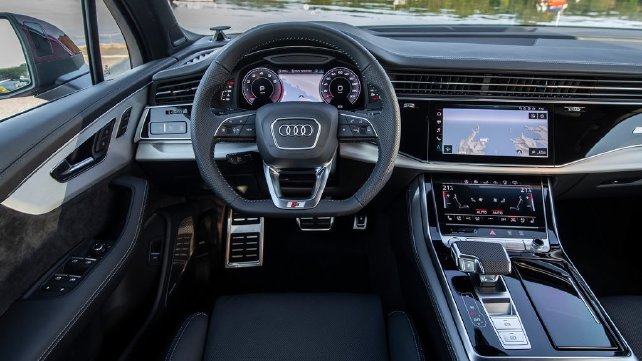The rise of electric vehicles (EVs) has brought about a significant shift in the automotive industry. As we transition towards more sustainable transportation options, an intriguing question arises: should electric vehicles look different from conventional cars?
This article explores the various factors that contribute to this debate and delves into the importance of visual differentiation in the context of EV design.
Definition of Electric Vehicles
Electric vehicles, commonly known as EVs, are automobiles powered by one or more electric motors that run on electricity stored in rechargeable batteries.
Unlike conventional cars that rely on internal combustion engines fueled by gasoline or diesel, EVs offer a cleaner and more environmentally friendly mode of transportation.
Advantages of Electric Vehicles
Before discussing the visual differentiation of electric vehicles, it is crucial to highlight the advantages they bring. EVs have lower or zero tailpipe emissions, reducing air pollution and contributing to improved air quality. Additionally, they are more energy-efficient and can be powered by renewable energy sources, further minimizing their carbon footprint.
Moreover, electric vehicles provide a smooth and quiet driving experience, requiring less maintenance than traditional cars.
Perception of Electric Vehicles
Despite their numerous benefits, electric vehicles still face certain challenges regarding consumer perception. Some people associate EVs with limited range, long charging times, and inadequate charging infrastructure.
There is also a common belief that electric vehicles lack the power and performance of conventional cars. These perceptions can hinder the widespread adoption of EVs and create a need for differentiation in their design.
Importance of Visual Differentiation
Visual differentiation plays a crucial role in shaping consumer perceptions and acceptance of electric vehicles. Given the similarities in terms of functionality and overall appearance between EVs and conventional cars, visual cues can help communicate the unique attributes of electric vehicles.
By creating distinctive designs, EV manufacturers can reinforce the idea that electric vehicles represent a new era of transportation and sustainability.
Safety Considerations
One aspect to consider in checklists to consider before buying a new car & discussing visual differentiation is safety. In emergency situations, such as accidents or fires, it is essential for first responders to identify and handle electric vehicles properly and quickly.
Distinctive visual elements, such as unique lighting signatures or specific labelling, can aid in the prompt recognition of EVs and ensure the safety of occupants and emergency personnel.
User Experience and Psychology
The design of electric vehicles goes beyond aesthetics; it also impacts the user experience and psychology of drivers and passengers. A visually appealing and futuristic design can enhance the perceived value and desirability of EVs, contributing to a positive emotional connection with the vehicle.
Moreover, a well-thought-out interior design that optimizes space and integrates advanced technologies can create a more immersive and enjoyable driving experience.
Environmental Impact
Visual differentiation in electric vehicle design can be a visual reminder of their environmental benefits. By incorporating elements such as unique colours, futuristic shapes, or eco-friendly materials, manufacturers can convey a strong message about the sustainability aspect of EVs.
This visual connection can help raise awareness and inspire others to make environmentally conscious choices in their transportation habits.
Design Challenges
Designing visually distinctive electric vehicles comes with its own set of challenges. Striking a balance between differentiation and maintaining familiarity can be a delicate task. EVs must be visually appealing to attract consumers while still being recognized as cars.
Furthermore, manufacturers must consider the practicality of design choices, ensuring that visual differentiation does not compromise aerodynamics, range, or overall functionality.
Solutions for Visual Differentiation
To achieve visual differentiation, manufacturers can explore various design elements. Unique front-end designs, such as closed grilles or illuminated accents, can help distinguish EVs from conventional cars. Creative use of lighting, both on the exterior and interior, can create a distinct identity for electric vehicles.
Moreover, integrating sustainable materials and futuristic shapes can further emphasize the eco-friendly nature of EVs.
Market Acceptance and Consumer Demand
The success of electric vehicles relies heavily on market acceptance and consumer demand. Visual differentiation can contribute to the overall appeal of EVs, attracting consumers who seek a distinct and forward-thinking driving experience.
However, it is essential to strike a balance and ensure that the visual design does not alienate potential buyers who prefer a more familiar appearance.
Government Regulations and Incentives
Government regulations and incentives also play a significant role in shaping the visual differentiation of electric vehicles. Some countries and municipalities provide incentives or mandates for EV manufacturers to adopt unique design elements, making it easier for consumers to recognize and distinguish electric vehicles on the road.
These regulations can accelerate the adoption of EVs and create a more sustainable transportation landscape.
Future of Electric Vehicle Design
As electric vehicle technology continues to evolve, so will their design. The future holds exciting possibilities, including advancements in battery technology, autonomous driving capabilities, and innovative materials.
Such developments will undoubtedly influence the visual differentiation of electric vehicles, further enhancing their appeal and paving the way for a sustainable and electrified future.
Wrapping Up
The question of whether electric vehicles should look different from conventional cars is a complex one. Visual differentiation serves a vital purpose in communicating the unique attributes of EVs, improving safety, enhancing user experience, and emphasizing their environmental impact.
However, achieving visual differentiation while maintaining market acceptance and functionality poses design challenges. As the electric vehicle industry progresses, finding the right balance between differentiation and familiarity will continue to shape the future of EV design.








